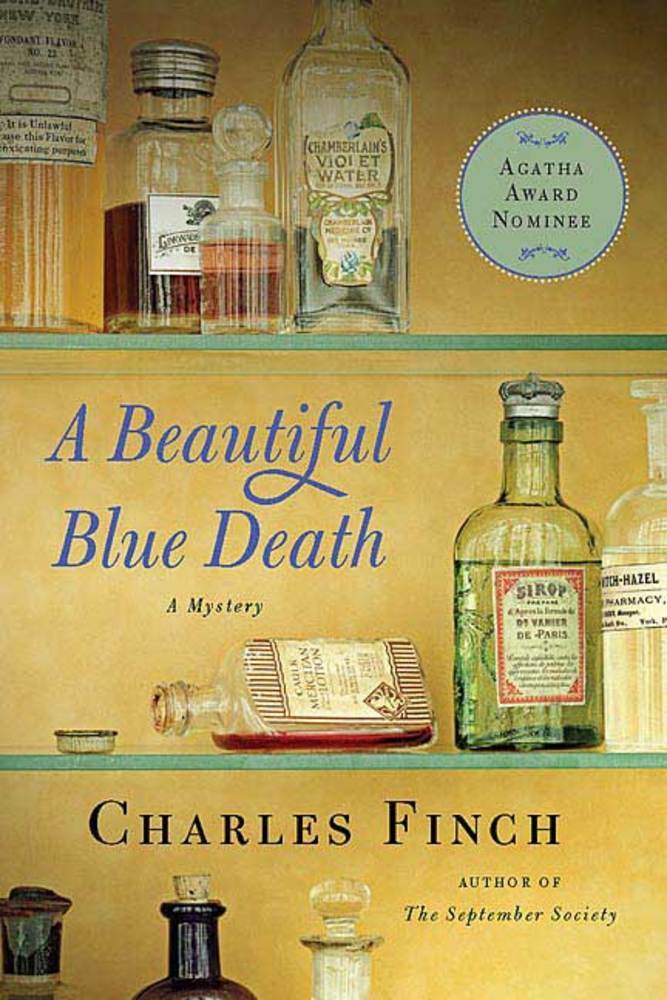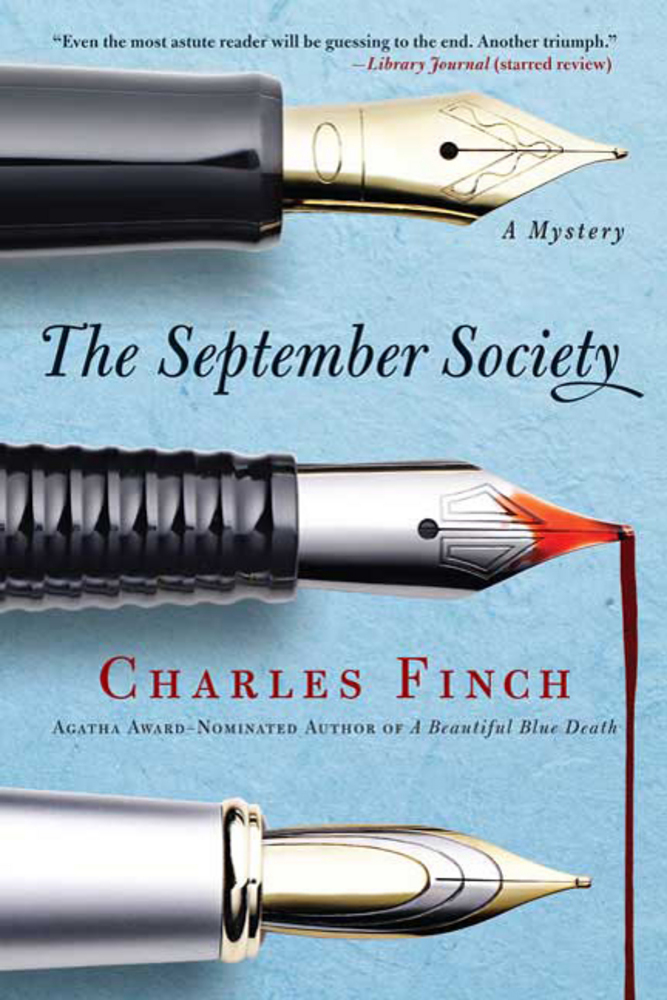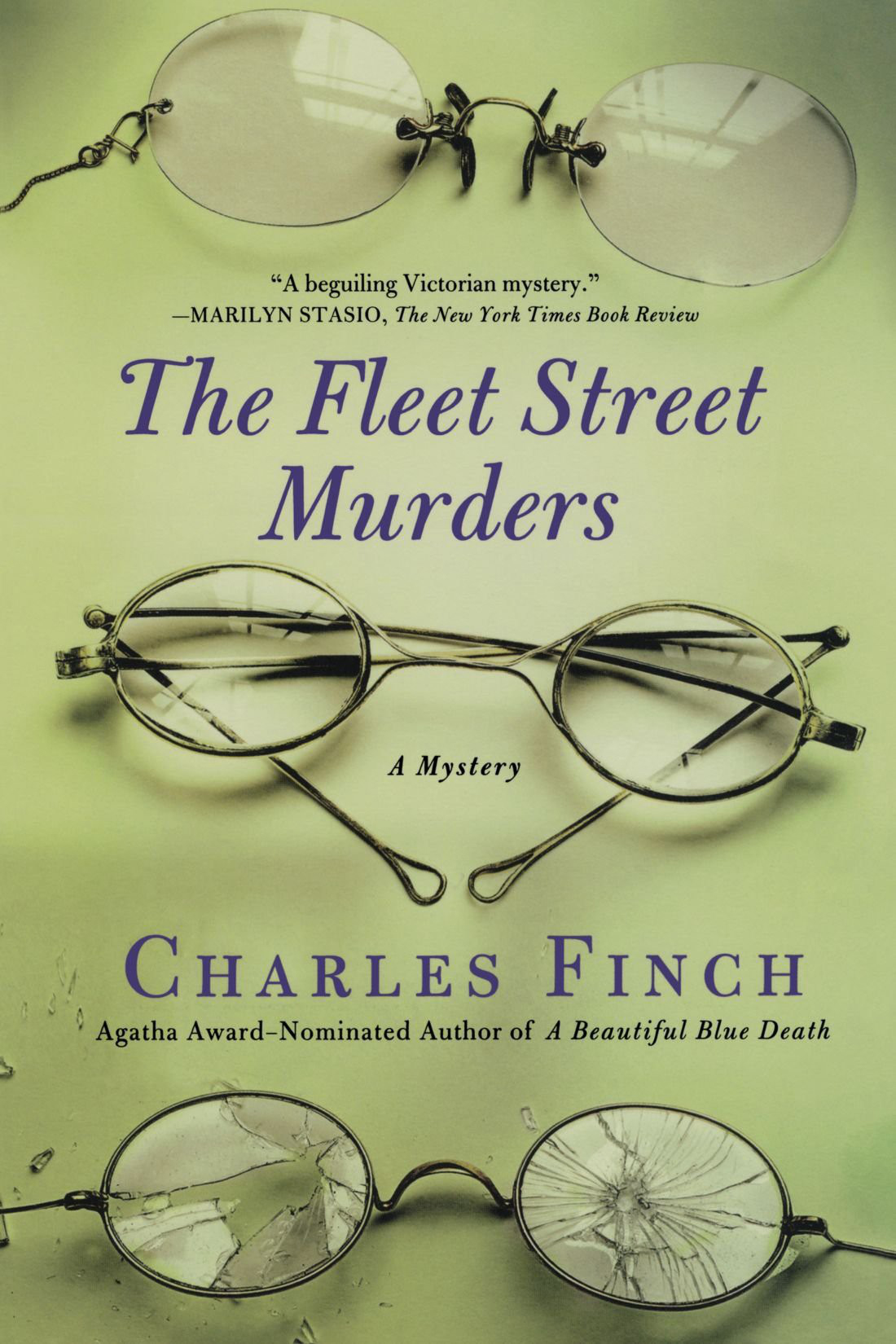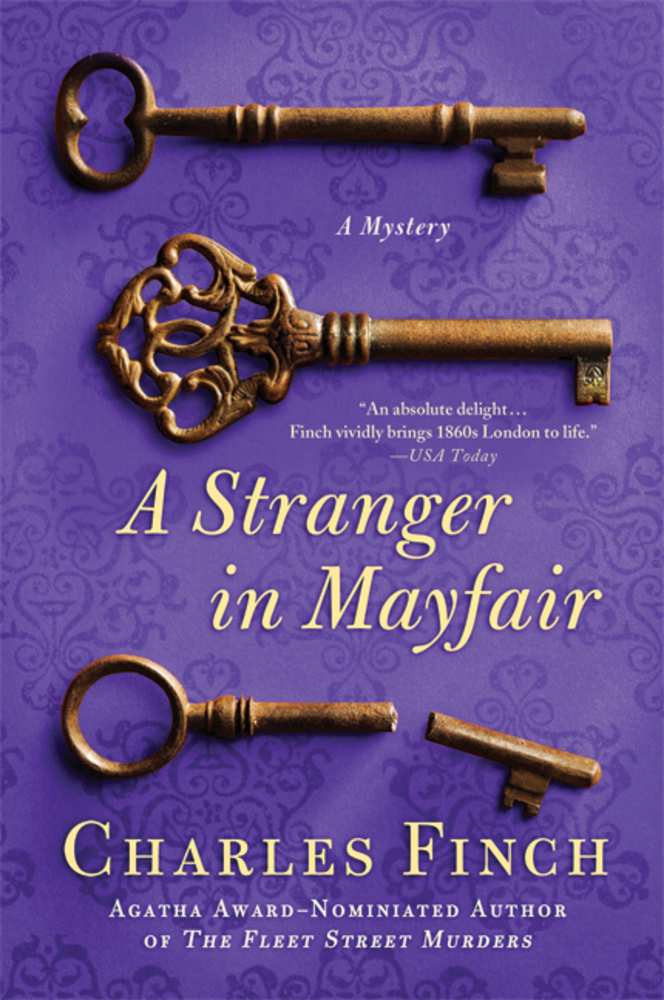Charles Finch
Books: Mystery | Historical
Charles Lennox: A Beautiful Blue Death (2007), The September Society (2008), The Fleet Street Murders (2009), A Stranger in Mayfair (2010)
Charles Lennox
A Beautiful Blue Death (2007)
 A Beautiful Blue Death has come up for awhile now as a recommended book for me, and there is good reason for that: I love historical mysteries.
A Beautiful Blue Death has come up for awhile now as a recommended book for me, and there is good reason for that: I love historical mysteries.
Charles Lenox is a gentleman who likes to dabble in the investigation of crimes. Being a gentleman, he has the time and the wealth to dabble as he pleases. His neighbor, Lady Jane Grey, asks him to investigate the death of her former maid who had gone into the service of George Barnard to be closer to her fiance, who was a footman at Barnard's house. Barnard wants Lenox to have nothing to do with the investigation, which makes the investigation rather more difficult.
One of the things I love about historical mysteries is when they're done well they transport me to another place and time. I'm not foolish enough to believe I would want to live in such a place and time–I like indoor plumbing and the right to vote–but the past is an interesting place to visit.
But I'm still not quite sure how I feel about Charles Lenox and A Beautiful Blue Death. Lenox is a dabbler and a man of leisure, which is how he can afford to investigate crime as a hobby. He also has some ideals that seem far more modern than seems likely for the Victorian era and a man of his class. Not that there weren't people at that time who held what I would consider to be modern ideals, I just find it strange that historical mysteries are simply littered with open minded men and women. And of course the dislikable characters are those who actually hold the more that were common at the time.
Like I said, I enjoy living in modern times, but it seems to be that Victorian England of historical mysteries is populated with free thinking men and women who were far ahead of their times.
That's not to say that Lenox is a complete outlier and would have been seen as an outcast rather than a gentleman, it's simply that as a whole the attitudes of the characters felt far more modern than Victorian.
So how was the mystery? It wasn't bad. I did like that Lenox was challenged in his ability to investigate the murder, but there was nothing that leaped out of the pages at me and pulled me in to the point where I was totally immersed in the story.
That doesn't make this a bad book–and it isn't a bad book. It's just that for an Agatha Aware Nominee, I was expecting more.
On the other hand, I'm thinking Grandmom will love this book, so there is that.
August 2009 | Rating: 6/10
The September Society (2008)
 Charles Lennox is visited by Lady Anabelle, a widow who is worried that something terrible has happened to her son. Lennox considered brushing her off politely until she tells him she found a murdered cat in her son's rooms at Oxford.
Charles Lennox is visited by Lady Anabelle, a widow who is worried that something terrible has happened to her son. Lennox considered brushing her off politely until she tells him she found a murdered cat in her son's rooms at Oxford.
Lennox is actually looking forward to taking on this case, as he himself went to school in Oxford, and would not minding the campus again. Unfortunately, the continued absence of George, and the strange circumstance of his disappearance are cause for concern, and a mysterious group called "The September Society" seems to be at the heart of the matter.
I remember liking the first book in this series… no, I take that back. I wasn't enamored of the first book in this series, so apparently I purchased the second book for Grandmom to read.
Here's something on page 12 that particularly annoyed me.
He looked back across the street towards his brightly lit house ad saw his carriage waiting, the horses occasionally stamping their feet and the driver huddled underneath a thick black coat to keep the rain off, with only a pipe protruding from the coat's hood, its ember occasionally brightening to orange.
This didn't strike me as bad, just careless. Why is the bowl of the pipe not filling up with water? And more importantly, how is Lennox seeing into the bowl of the pipe to see the ember burning anyway?
It's not terrible, it just bothers me, and little things like this kept throwing me out of the story.
But, I do believe Grandmom will enjoy it at least, because although it wasn't terrible, I didn't care for it any better than the first book.
Published by Minotaur Books
- February 2011 | Rating: 6/10
- September 2015 | Rating: 6/10
The Fleet Street Murders (2009)
Two prominent journalists are discovered murdered, and the link between the two is the trial and execution of a traitor.
Meanwhile, Charles has decided to stand for Parliament–for an area he'd never previously even visited, because that was politics at that time.
We have two separate thread in this story: the murders and Charles' run for Parliament, and Charles has a difficult time determining which is more important. That part of the story was interesting, seeing Charles being torn between his hobby and and his desire to sit in Parliament.
We also see the muddled mess that was politics at the time, starting with the fact that Charles could vie for a seat in an area he'd never previously set foot in.
It was a strange political system that led to Hilary representing Liverpool, while the Liberal Party's current leader in the House, William Gladstone, had grown up in Liverpool but for a long time represented Oxford, of all places. Still, he also believed that his platform would genuinely help the people of Stirrington more than Roodle's, and he resented the negative, attacking nature of Roodle's campaign.
Lenox detested the fact, but it was simple enough: In elections for Parliament, bribery mattered. It was no surprise at all when Graham reported that in the Roodle pubs votes were worth two crowns a head.
And I did (of course) like the historical bits about the buildings and places.
It was Alfred the Great who had first gathered in hand the muddled system of moneyers' workshops in Anglo-Saxon times and founded the London Mint, in 886. By 1279 the Mint was firmly entrenched in the safest single place in England— the Tower of London, where it remained for five centuries. In 1809 it had moved to a vast, golden-stoned building in East Smithfield.
But I was reminded of what had annoyed me about the writing the first time I read the series. The writing is often overblown.
One stooped old man— an oenophile, judging from the excited quiver of his nose over every bottle he smelled— was rooting through a case in the back.
It's like the author needed an excuse to use the word oenophile, to show off his erudition. That bit would have been better without working the word into the sentence, because you'd still have the sense of the place without the vocabulary less.
But, I kept reading because I do like the historical bits, and I was curious as to how the murder would be resolved. (The man behind the murder was obvious, although many of the details were interesting.)
Published by Minotaur Books
September 2016 | Rating: 6/10
A Stranger in Mayfair (2010)
The story begins with Charles and Lady Jane ending their Honeymoon on the continent, and returning to London where Charles will begin his political career and the two adjust to married life.
As with the previous book, my favorite parts were the historical bits.
The reason for the construction of the new Parliament was simple enough. A fire. Until the middle of the 1820s, sheriffs collecting taxes for the crown had used an archaic method of recordkeeping, the tally stick. Beginning in medieval England, when of course vellum was far scarcer than paper now, the most efficient way to record the payment of taxes had been to make a series of different-sized notches in long sticks. For payment of a thousand pounds, the sheriff cut a notch as wide as his palm in the tally stick, while the payment of a single shilling would be marked with a single nick. The thumb was a hundred pounds, while the payment of one pound was marked, obscurely, with the width of a "swollen piece of barleycorn."
It was a system that in the eighteenth century was already antiquated, and by William the Fourth's reign embarrassingly so. Thus it was in 1826 that the Exchequer— that branch of government that manages the empire's funds— decided to change it. This left one problem, however: two massive cartloads of old tally sticks of which to dispose. The Clerk of Works (unfortunate soul) took it upon himself to burn them in two stoves in the basement that reached below the House of Lords. The next afternoon (October 16, 1834) visitors to the Lords complained of how hot the floor felt. Soon there was smoke.
Then came the fatal mistake. A caretaker of the place, Mrs. Wright, believed she had solved the problem when she turned off the furnaces. She left work. An hour later, the entire group of buildings was almost wholly in flames. The conflagration, even though citizens of London fought it valiantly, consumed almost all of the old Palace of Westminster.
I love bits like that.
A man in tremendously ornate garb appeared at the door of the chamber, and to Lenox's shock a gentleman at the far end got up and slammed the door in his face.
"That's the Lord Great Chamberlain," he whispered. "It means the Queen has entered the building— through the Sovereign's Entrance, of course, on the other side from ours— and taken on the Robes of State. We slam the door in his face to show we're independent— that we don't have to listen to a monarch."
That's another pretty marvelous bit.
And I admit that I appreciated that Charles and Jane had big adjustments ahead of them, getting used to being married and living with another person.
The mystery was just meh, and the bits about Charles political career (with the exception of that bit above) were, to be honest, somewhat boring.
Perhaps it's because I'm currently jaded to politics, but I just didn't care about all the blue books he had to read, and how he was trying to balance his "work" with Parliament.
I'm done with this series for now. Perhaps later I'll be in a better mood for it.
Published by Minotaur Books
October 2016 | Rating: 6/10


